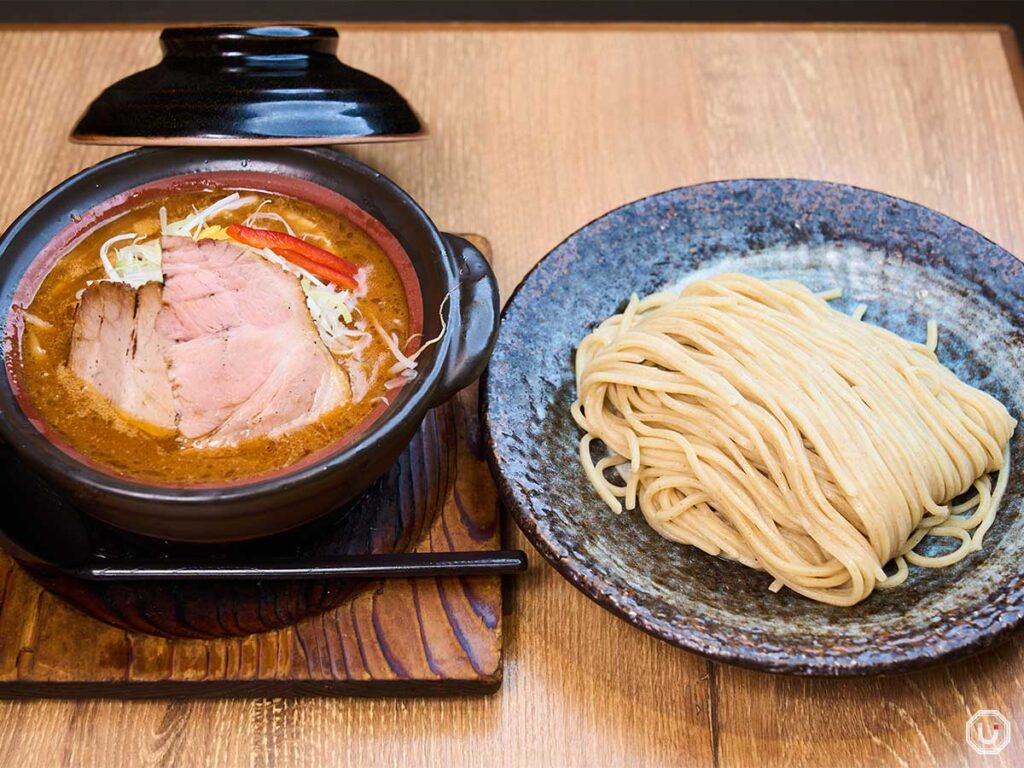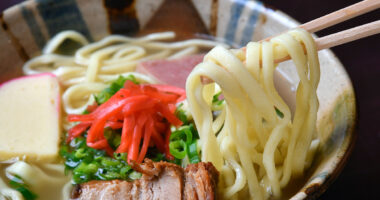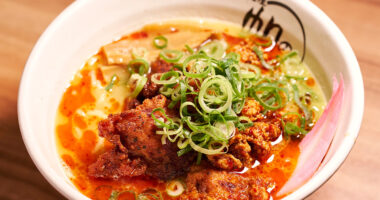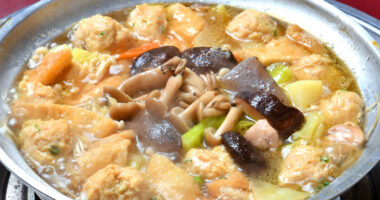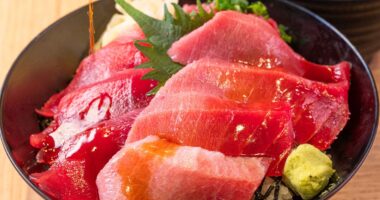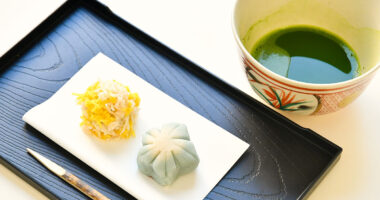Ramen is one of the most iconic dishes in Japanese cuisine. The classic soup bases include soy sauce, salt, tonkotsu (pork bone), and miso.
Among them, miso ramen—made with a soup base using miso—offers a rich, savory depth of flavor.
At “Miso ga Ichiban” in Nakano, Tokyo, you can enjoy ramen that brings out the full flavor and aroma of miso.
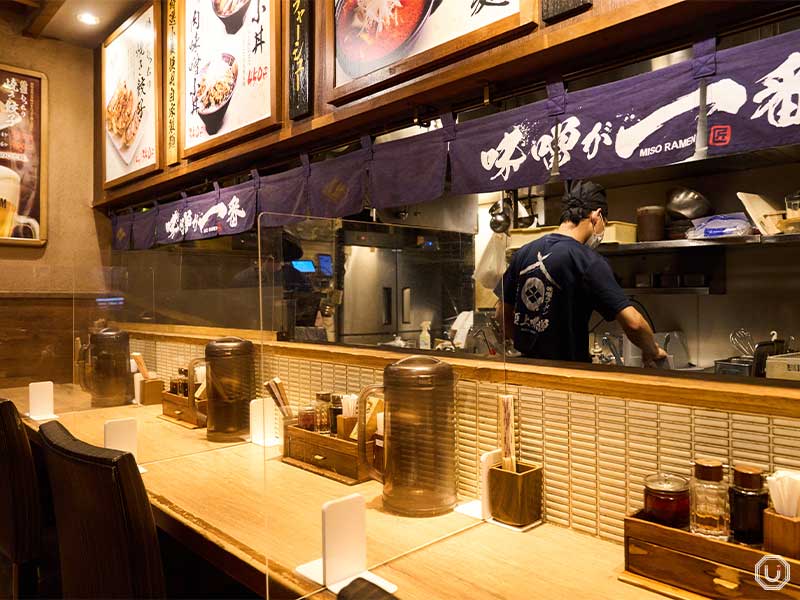
Interior of Miso ga Ichiban
The classic miso ramen features a rich, aromatic miso-based broth paired with medium-thick noodles.
These days, you can find a wide variety of miso ramen styles across Japan, with differences in the type of miso used, the dashi base, the thickness and texture of the noodles, and even the choice of toppings.
Miso ga Ichiban is a popular restaurant that draws crowds year-round, thanks to its attention to every detail—from the miso blend and broth preparation to the thoughtful pairing of toppings.
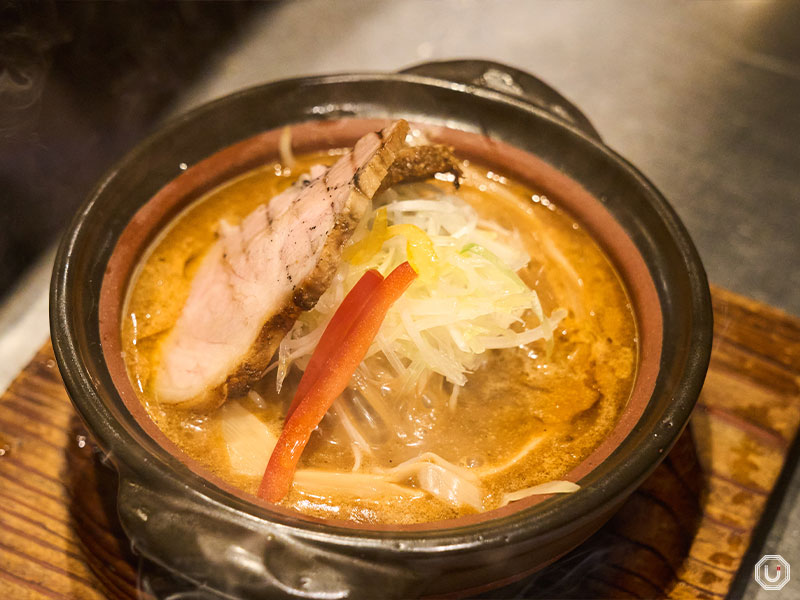
Rich and flavorful “Donabe Miso Tsukemen” served piping hot until the last bite
At Miso ga Ichiban, the most essential element is the house-blended miso that forms the base of the soup.
Their original blend combines three types of miso: the salty “Shinsyu-ichi Miso” (pronounced shinshū-ichi) from Nagano Prefecture, the well-aged “KOH-ITTEN” miso from Hokkaido Prefecture, and the deeply rich Hatchō miso from Aichi Prefecture.
The signature “Donabe Miso Tsukemen” features a dipping broth made by blending this special miso mix with a rich white broth made from pork and chicken.
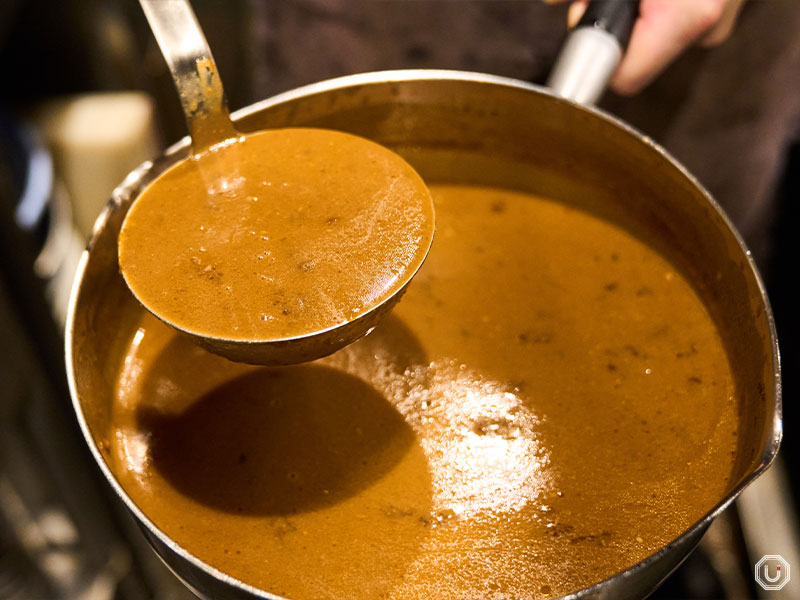
The noodles are thick and house-made using a blend of whole wheat flour and Yume Akari, a premium wheat flour from Aichi Prefecture.
They’re freshly kneaded in the in-store noodle room every day and always served within 24 hours to ensure peak freshness.
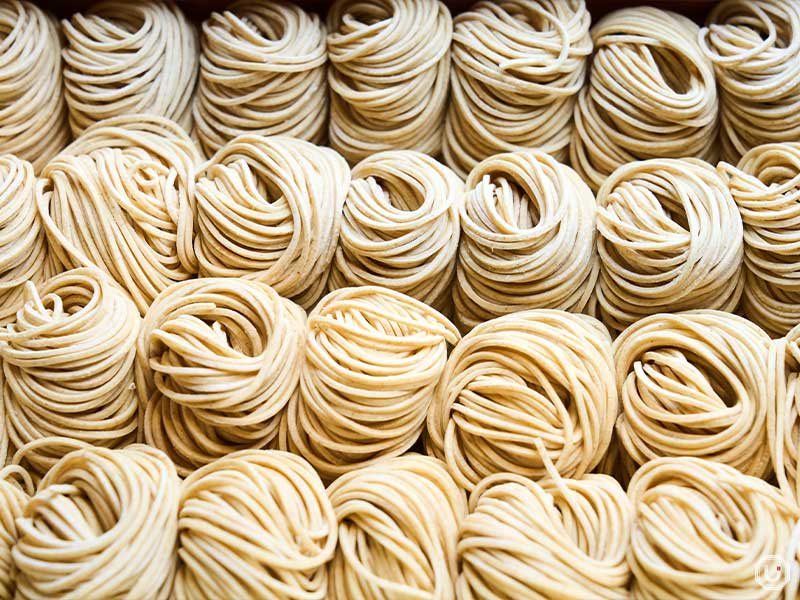
The noodles for the Donabe Miso Tsukemen are a hearty 230 g (about 8.1 oz) before boiling
To prevent the broth from becoming diluted, the bean sprouts and cabbage are quickly flash-fried in hot oil instead of being boiled, which would release excess moisture over time.
The dish includes two types of chāshū (Japan’s version of char siu): pork shoulder and pork belly, both charcoal-grilled for a smoky aroma. Once everything is plated, the finishing touch is a drizzle of rendered foie gras over the top.
Since tsukemen is served with the noodles and broth separately, dip only the portion you’re about to eat—don’t soak all the noodles at once.
And because the Donabe Miso Tsukemen is served in a donabe (traditional earthenware pot), it stays piping hot until the very last bite—one of the dish’s standout features.
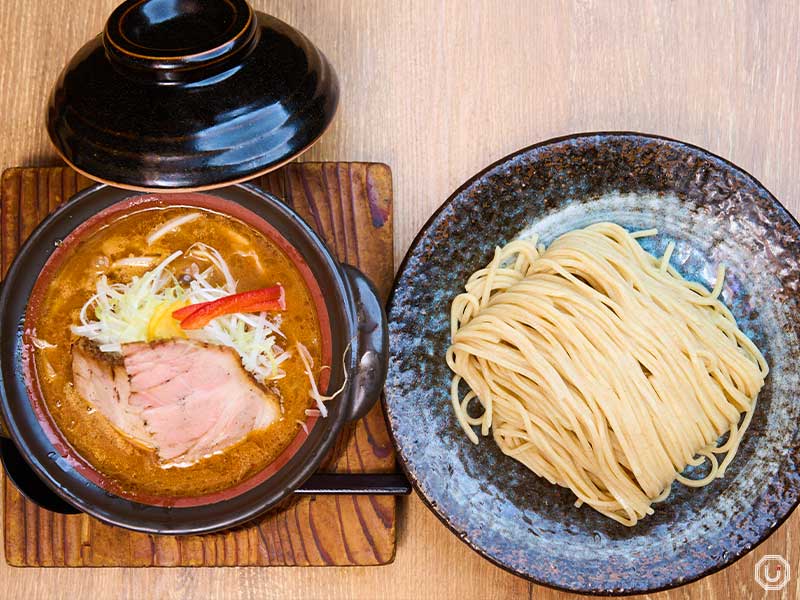
“土鍋味噌つけ麺,” Donabe Miso Tsukemen 1,080 JPY (tax included)
With your first bite of noodles, your mouth is instantly filled with the rich aroma and deep, savory flavor of miso.
The pleasantly springy texture of the noodles, combined with the fragrant wheat and bold miso broth, creates a perfectly balanced taste—so good it might just make your eyes widen in surprise.
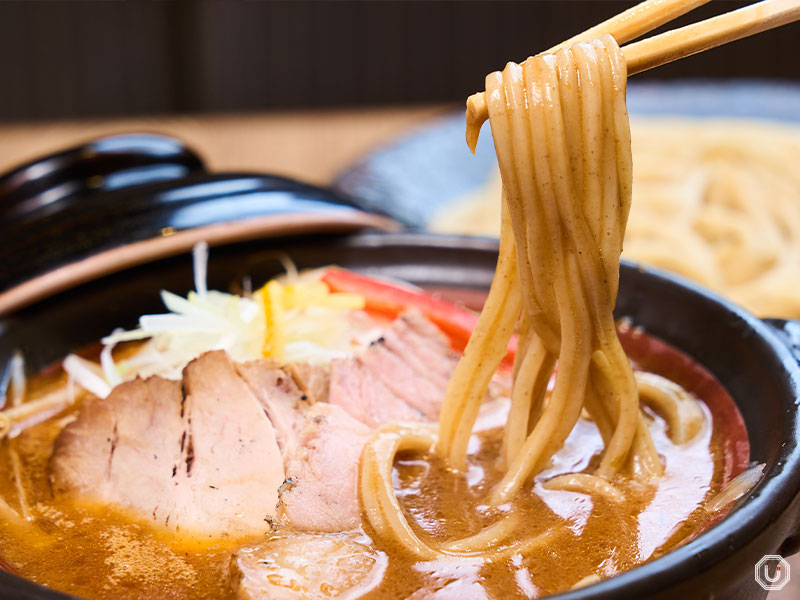
Toppings include bean sprouts, cabbage, two types of chashu, plus paprika, menma (fermented bamboo shoots), and green onions
Be sure to try the traditional Japanese 10-spice blend, jūmi, available at the table. It adds a kick of heat and transforms the flavor into something even more stimulating.
Since miso pairs well with rice, we also recommend ordering the “Ojiya Set (for Donabe Miso Tsukemen)” once you’ve finished the noodles and toppings.
Ojiya, a traditional Japanese rice porridge, is a warm, comforting dish. At Miso ga Ichiban, it’s made by reheating the leftover soup with rice, egg, and condiments like green onions—letting you enjoy the Donabe Miso Tsukemen in a whole new way.
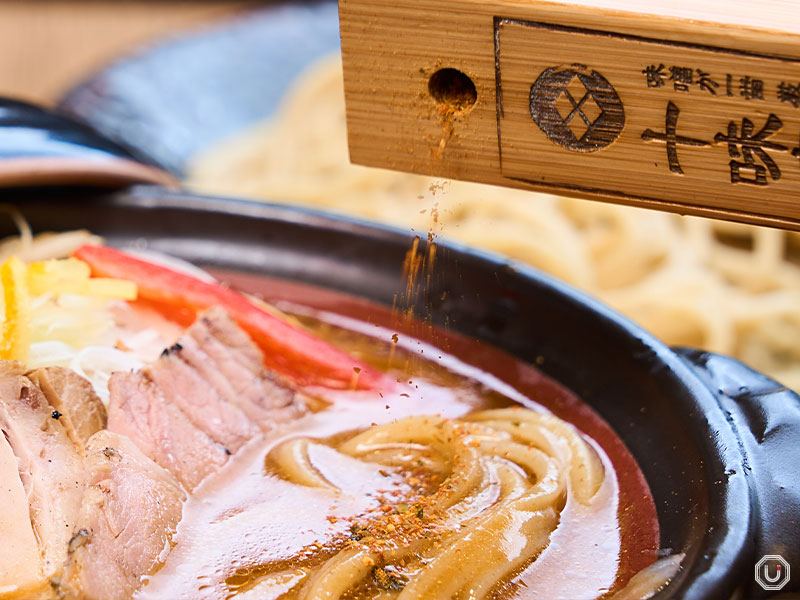
It’s best to sprinkle the jumi a little at a time
Rich, spicy, and addictive: the “Spicy Doro Miso Noodles”
“Spicy Doro Miso Noodles” is a bold and fiery ramen made with extra-rich miso and plenty of heat.
It’s a favorite among ramen lovers who crave intense, stimulating flavors.
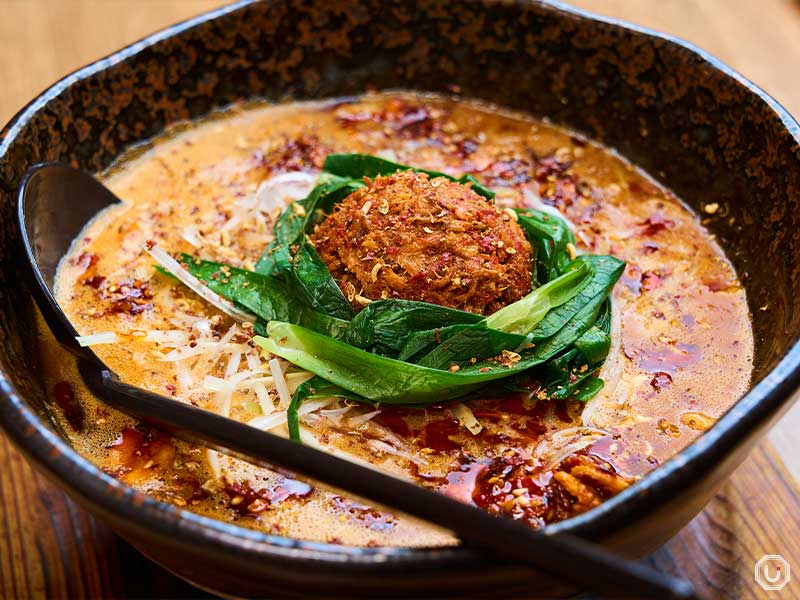
“辛いどろ味噌麺,” Spicy Doro Miso Noodles 1,080 JPY (tax included)
The soup for the Spicy Doro Miso Noodles is made by emulsifying their signature blended miso with pork back fat, then adding Korean chili powder and doubanjiang for both heat and sweetness, along with house-made chili oil and huājiāo (Sichuan peppercorns) to create a rich, flavorful base.
It’s not overwhelmingly spicy—instead, it strikes a perfect balance between heat and umami. The layered flavors deepen the richness of the soup, with a lingering tingling sensation that spreads gradually in your mouth.
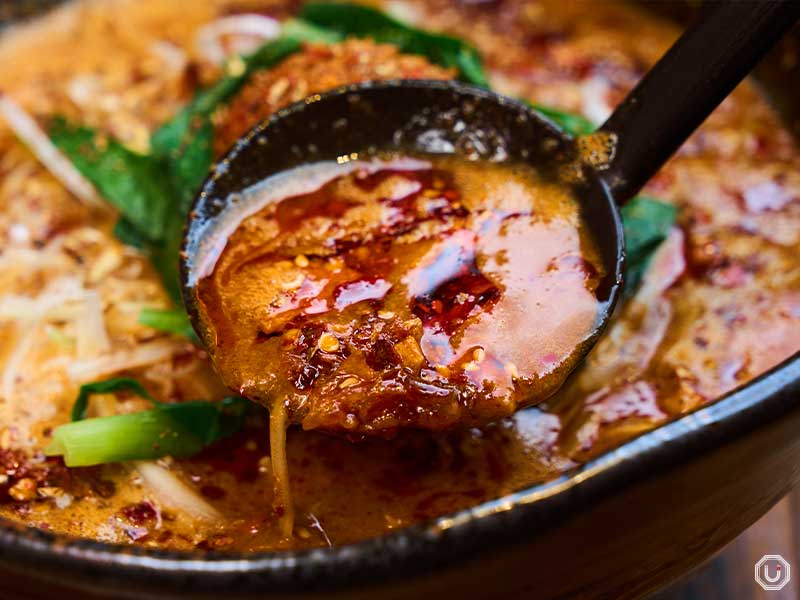
Spicy and rich, the soup is made with a blend of miso, chili oils, and Sichuan peppercorn
The Spicy Doro Miso Noodles features house-made thin noodles designed to pair perfectly with the thick soup. The result is a crave-worthy, junky flavor that clings to the noodles perfectly.
A mound of chopped chashu and spicy minced meat sits in the center—gradually breaking it up and mixing it in lets you enjoy evolving layers of flavor.
Once you taste the punchy, addictive richness, it’s easy to see why so many customers keep coming back for more.
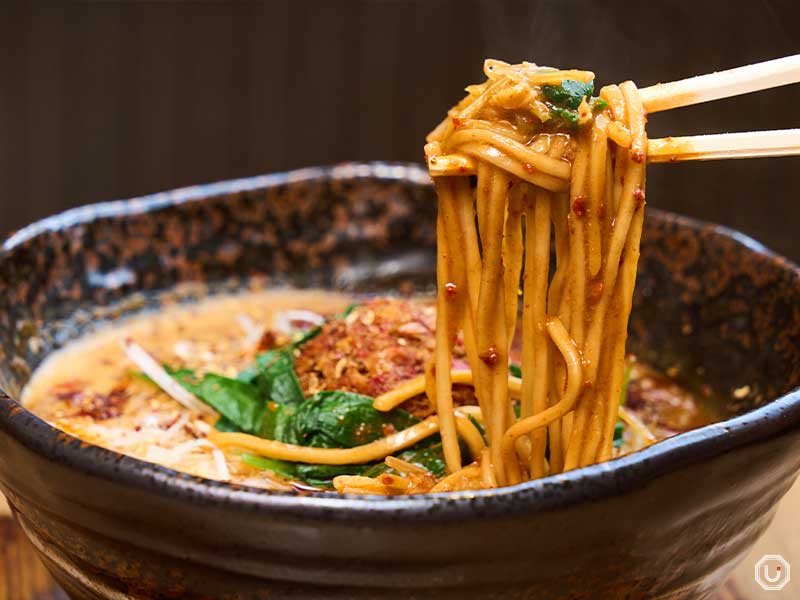
A one-of-a-kind summer special: “Hiyajiru Tsukemen”
A hugely popular summer-only dish, “Hiyajiru Tsukemen” offers a refreshing way to beat the heat.
Hiyajiru is a traditional chilled miso soup dish from Miyazaki Prefecture in southern Japan, typically served over rice as a cooling meal during the hot summer months.
The dish usually consists of a cold miso-based broth with fish stock, poured over rice and topped with ingredients like crumbled tofu, cucumber, and myōga (a type of Japanese ginger).
Miso ga Ichiban puts a creative twist on this classic by swapping the rice for noodles, transforming it into a refreshing and original summer tsukemen dish.
The dipping broth blends the mild sweetness of Saikyō miso with the rich umami of roasted barley miso and sea bream dashi, then adds crumbled tofu and a few slices of cucumber on top for a cooling finish.
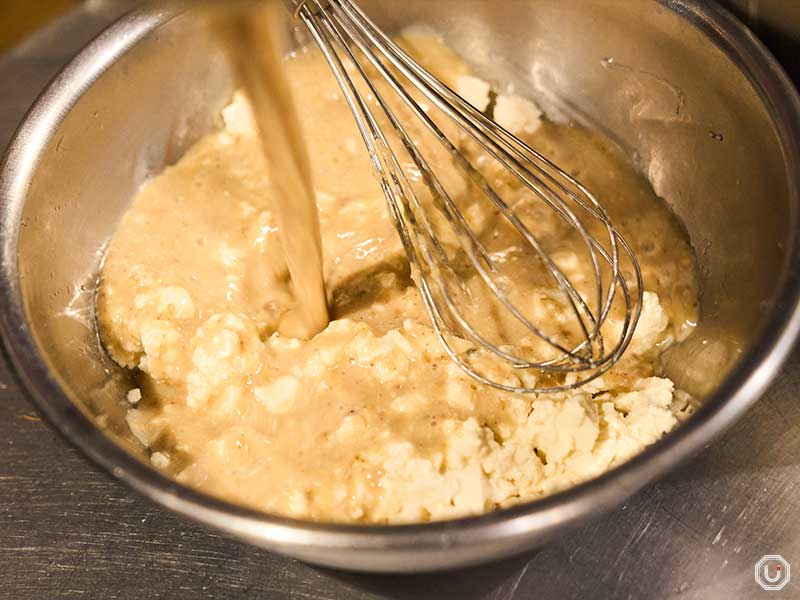
Making of Hiyajiru Tsukemen
The same thick noodles used in the Donabe Miso Tsukemen are featured here as well. After being chilled in cold water, their chewy texture becomes even more pronounced.
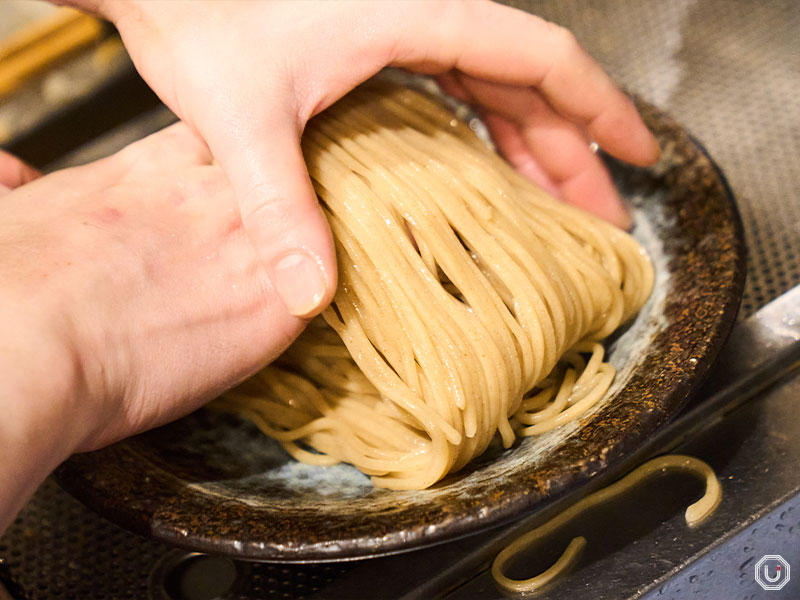
The toppings include charcoal-grilled chicken thigh chashu. On the side, you’ll find flaked sea bream, jumi, and slices of sudachi citrus, which adds refreshing aroma and tartness when added midway through your meal, giving the flavor a delightful shift.
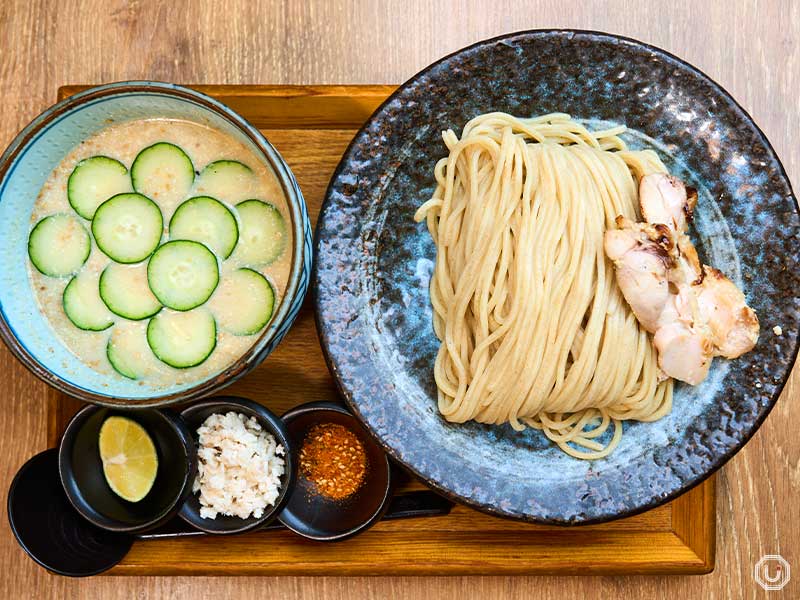
“冷や汁つけ麺,” Hiyajiru Tsukemen 1,080 JPY (tax included)
Cold miso dipping soup for noodles is a rare find, and the refreshing yet gentle flavor—where mellow miso and umami-rich seafood blend together—is something you won’t experience anywhere else.
We recommend squeezing a bit of sudachi over the noodles partway through your meal for a burst of citrus aroma and bright, tangy flavor.
For miso ramen crafted with incredible attention to detail and variety, be sure to visit Miso ga Ichiban.
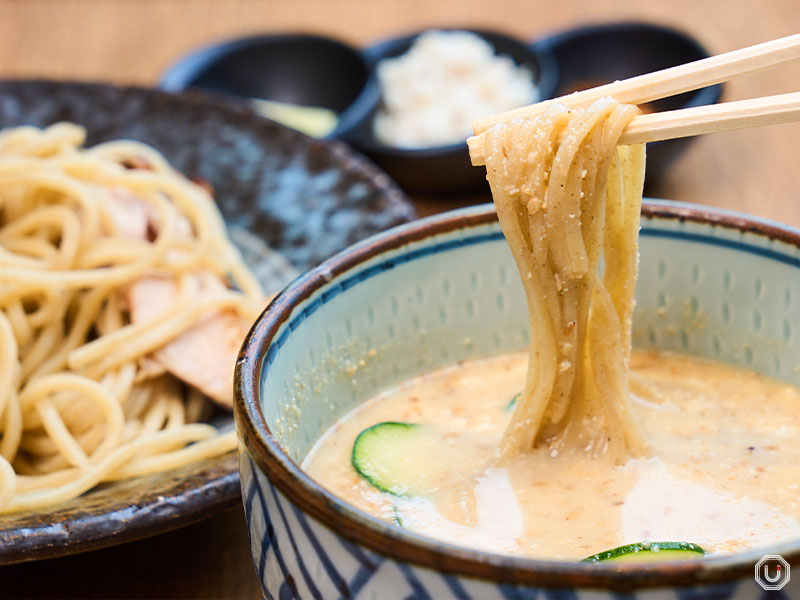
Information
| Store name | 味噌が一番 Miso ga Ichiban |
|---|---|
| Address | Chikushi Building B1F, 5-65-11 Nakano, Nakano-ku, Tokyo
|
| Access |
Nakano Station 3-minute walk from Nakano Station North Exit
|
| Phone number | 03-6454-0189 |
| Reservations | Not available |
| Payment |
|
| Service charge/Table charge | None |
| Hours | 11:00-24:00 |
| No fixed holidays | Unscheduled holidays |
| Seating | 20 seats 6 counter seats, 14 table seats |
| Smoking | All seats are non-smoking |
| Official website | None |
| Other information |
|
※Menu contents, prices, store information, etc. are current as of August 2025.
